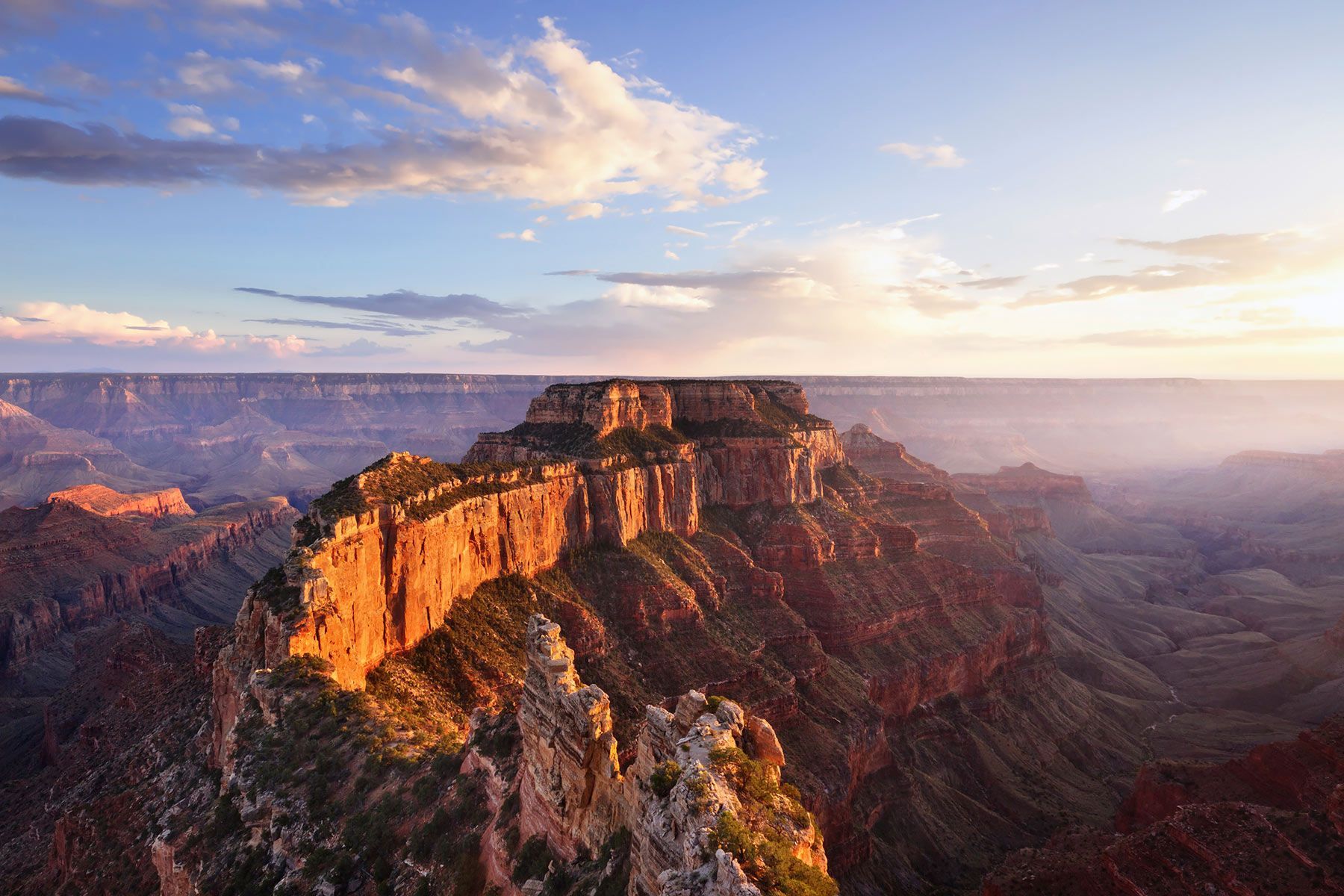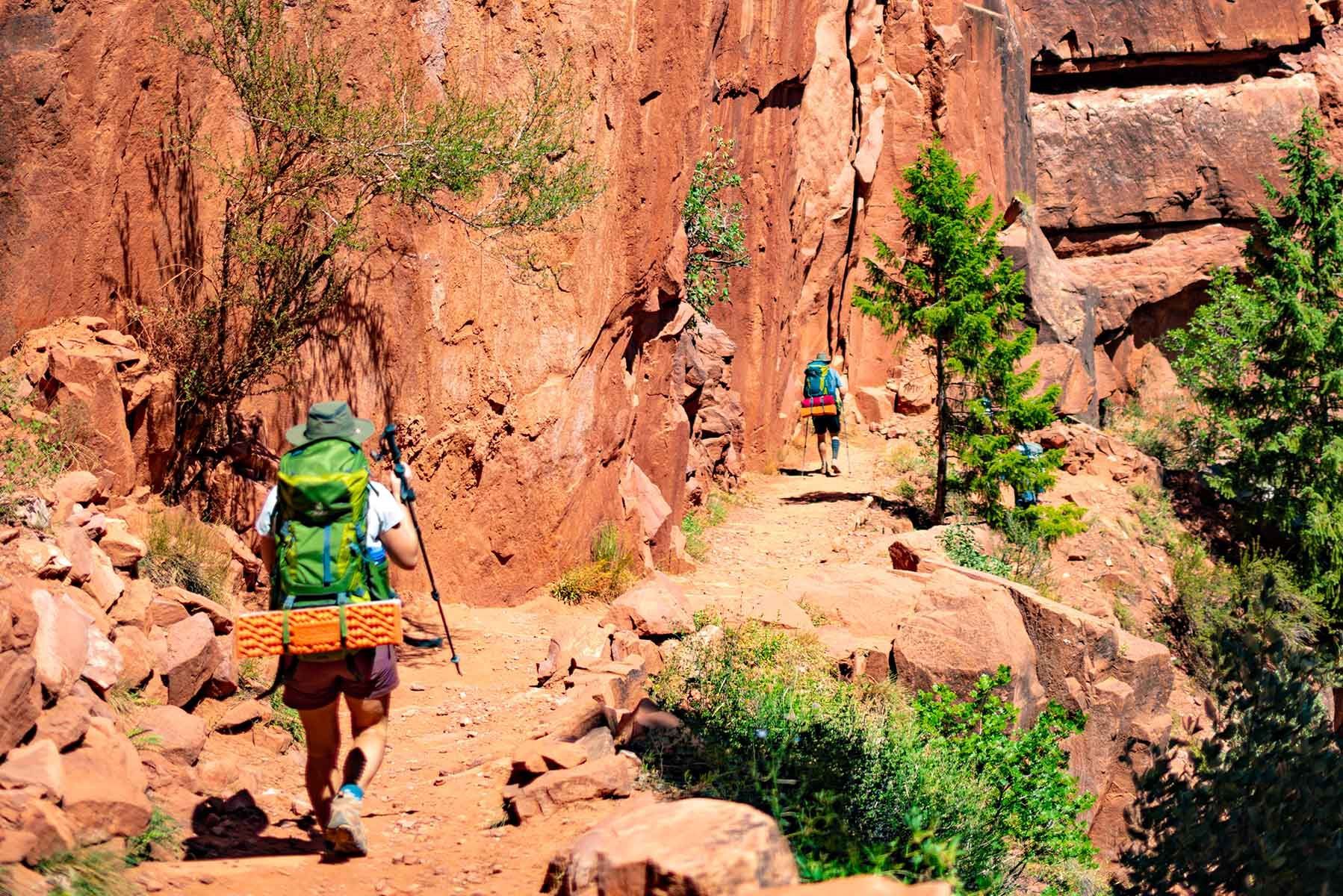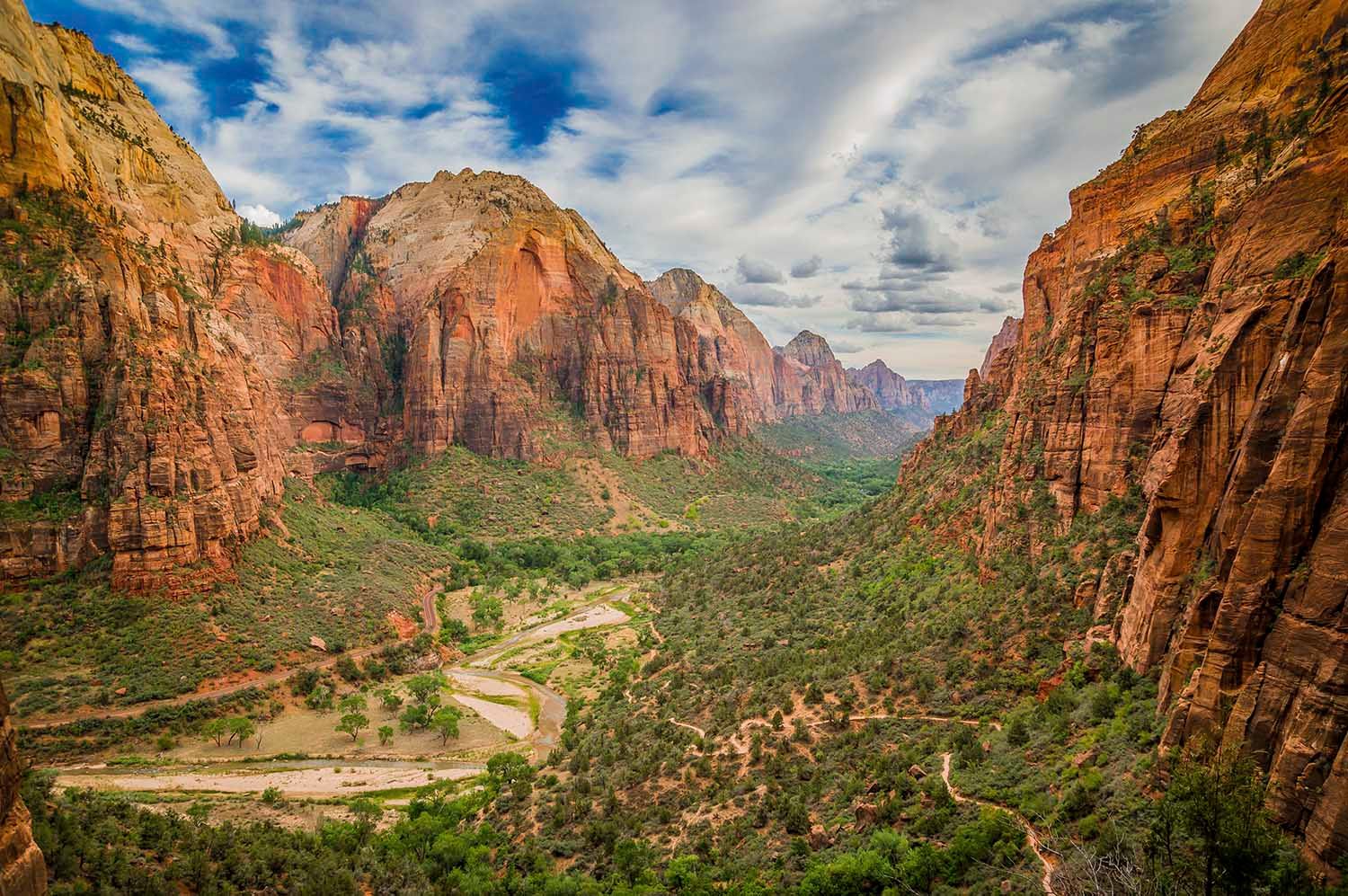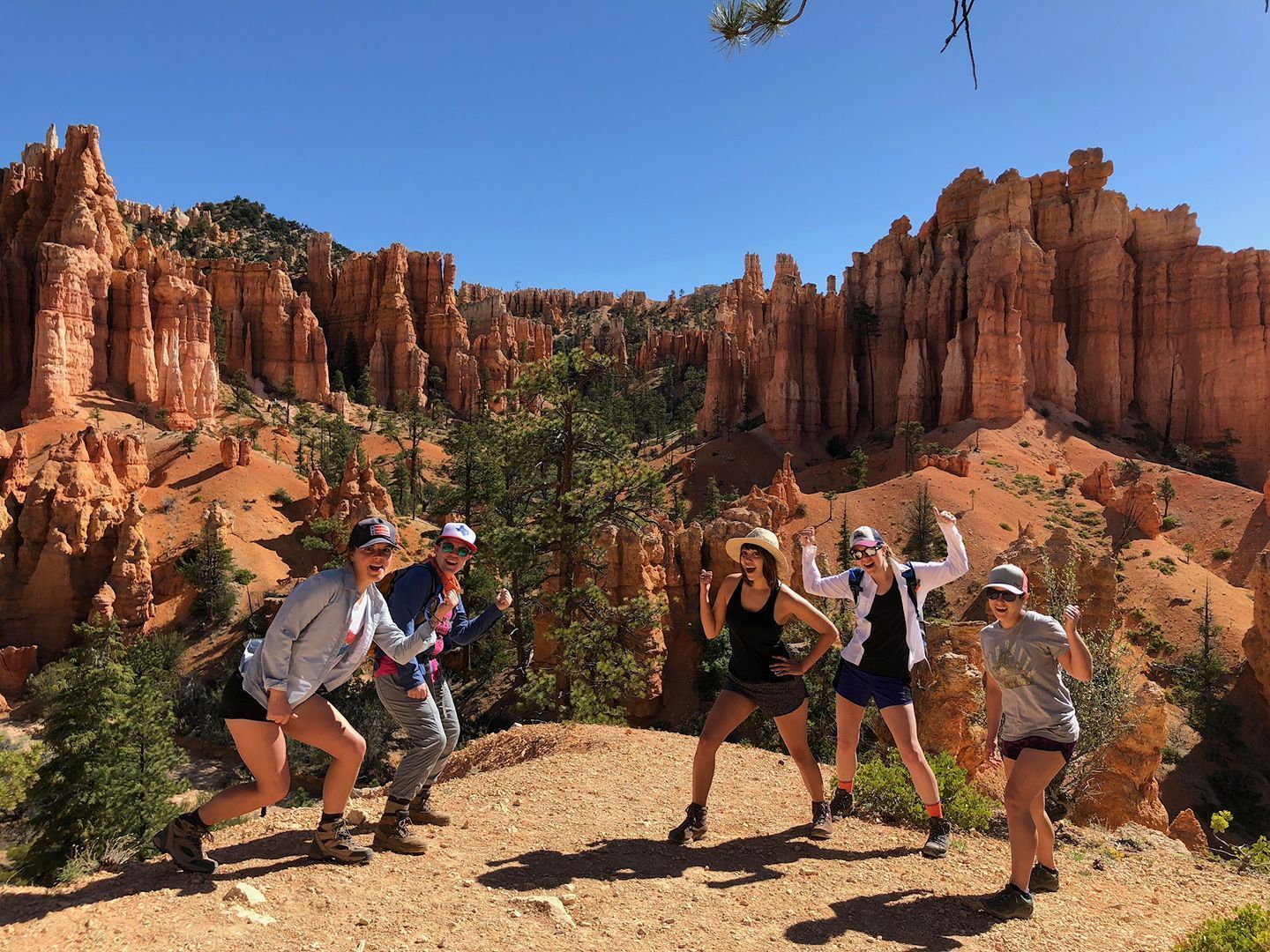The Best Time of Year to Visit Grand Canyon
Key Takeaways
- Grand Canyon offers year-round adventure: Each season delivers unique scenery and conditions, from peaceful winter solitude to colorful fall foliage—making it a true four-season destination.
- Winter is best for fewer crowds and cooler inner-canyon hikes: With mild temperatures at the canyon floor and minimal visitors, it’s perfect for quiet exploration and photography.
- Spring brings blooming desert landscapes and ideal hiking weather: March to May offers moderate temperatures and vibrant wildflowers, making it one of the most comfortable times to explore.
- Summer shines at the North Rim but challenges hikers below: Cooler alpine forests contrast the extreme heat of the inner canyon—ideal for sightseeing and shorter hikes.
- Fall provides the most balanced conditions overall: Crisp air, colorful foliage, and comfortable temperatures make September to November prime time for both casual visitors and backpackers.
Visiting Grand Canyon National Park is absolutely one of the must-do items for anyone traveling in the Southwestern US. Witnessing the scale and beauty of the world’s premier canyon system should be a bucket list item for everyone. The Grand Canyon is a 277-mile-long, 6000-foot slice through the landscape of Northern Arizona. Sheer canyon walls drop precipitously down to the rolling waters of the mighty Colorado River. If you ever wanted to feel dwarfed and insignificant by a landscape, the vastness and scale of the Grand Canyon will certainly offer you that perspective.
As 20+-year veterans of guided hiking tours in the Grand Canyon, we are always asked about “the best time of year to visit Grand Canyon.” The honest answer is that there isn’t a time of the year that doesn’t provide its own advantages and beauty. Due to the sheer size and elevation gradient of the canyon, it is always going to be a great time for visiting our Four Season playground.
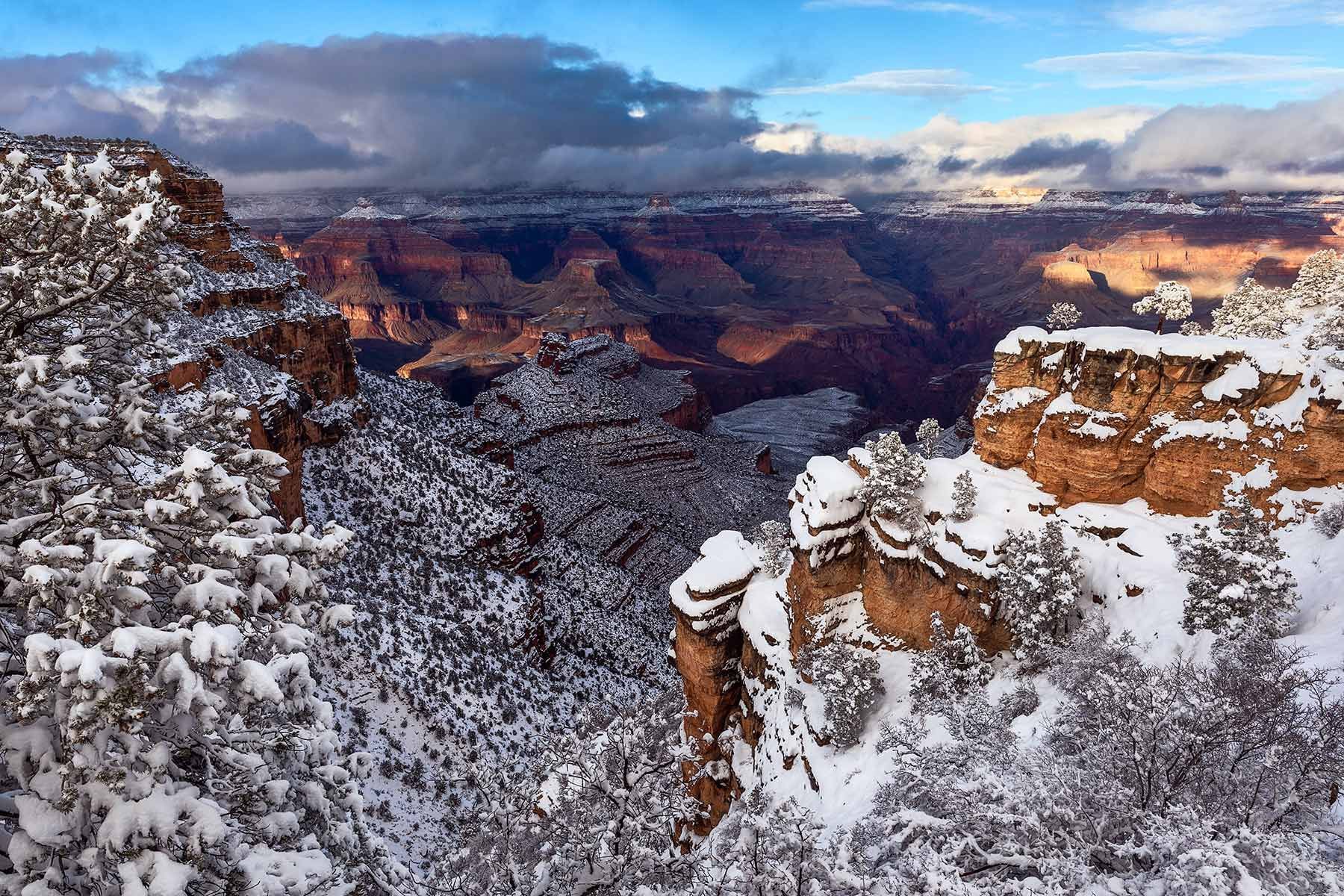
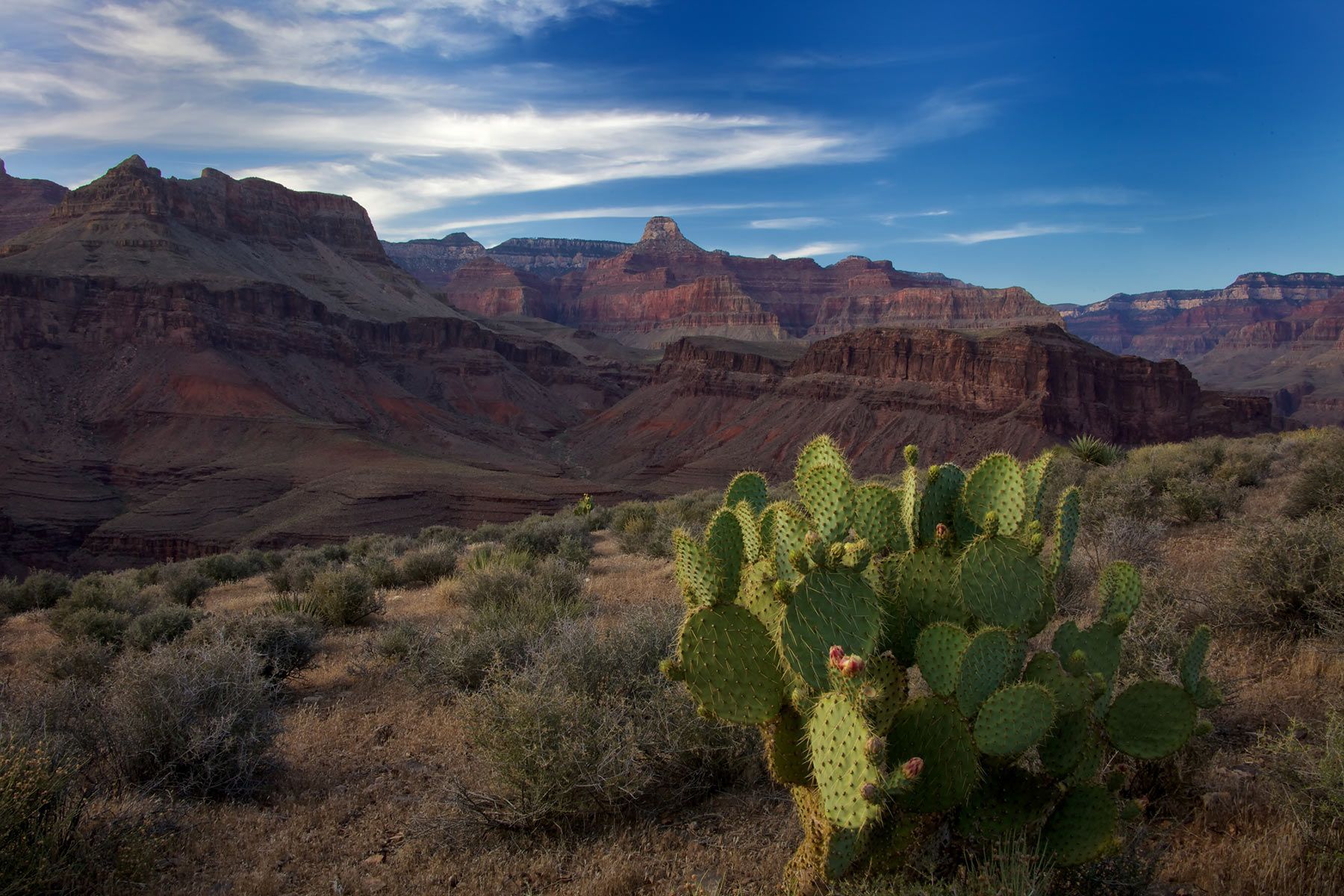
Summer in Grand Canyon is peak season for visitors, especially along the North and South Rims where the weather is warm and beautiful. The South Rim, which sits around 7000 feet above sea level, averages highs from the 80s (27-29C) to lows in the 50s (10-12C) at night. The North Rim is slightly cooler and is the perfect Arizona summer escape, with daytime highs in the 70s (21-25C) and the overnight lows near 50 (10C).
The elevation on the North Rim averages about 8000 feet and features one of the most beautiful mixed conifer and alpine forests in the state. Grand Canyon’s North Rim is simply the ideal destination if you’re visiting in the summer. While the interior of the canyon will remain consistently above 100 degrees Fahrenheit (over 38C), and potentially as high as 120, the North Rim forests and viewpoints can’t be beat in the summer.
July and August are Monsoon Season in the Southwest and the afternoons frequently bring spectacular thunderstorms, complete with short but torrential downpours, incredible rainbows, and stunning sunsets. Backpacking trips are still possible, but require a higher level of physical preparation and ability to adapt to the heat.
An overnight Grand Canyon hiking trip in the summer requires waking before sunrise and hiking during the cooler times of the day. During the heat of the day we like to find a creek or a bit of shade and enjoy some rest and relaxation. However, the Monsoons introduce an increased risk of flash floods in narrow canyons, so we encourage not planning a trip that requires extensive water hiking.
Suggested Hikes: Grand Canyon Explorer,
Grand Canyon Summer Tour,
Rim to Rim
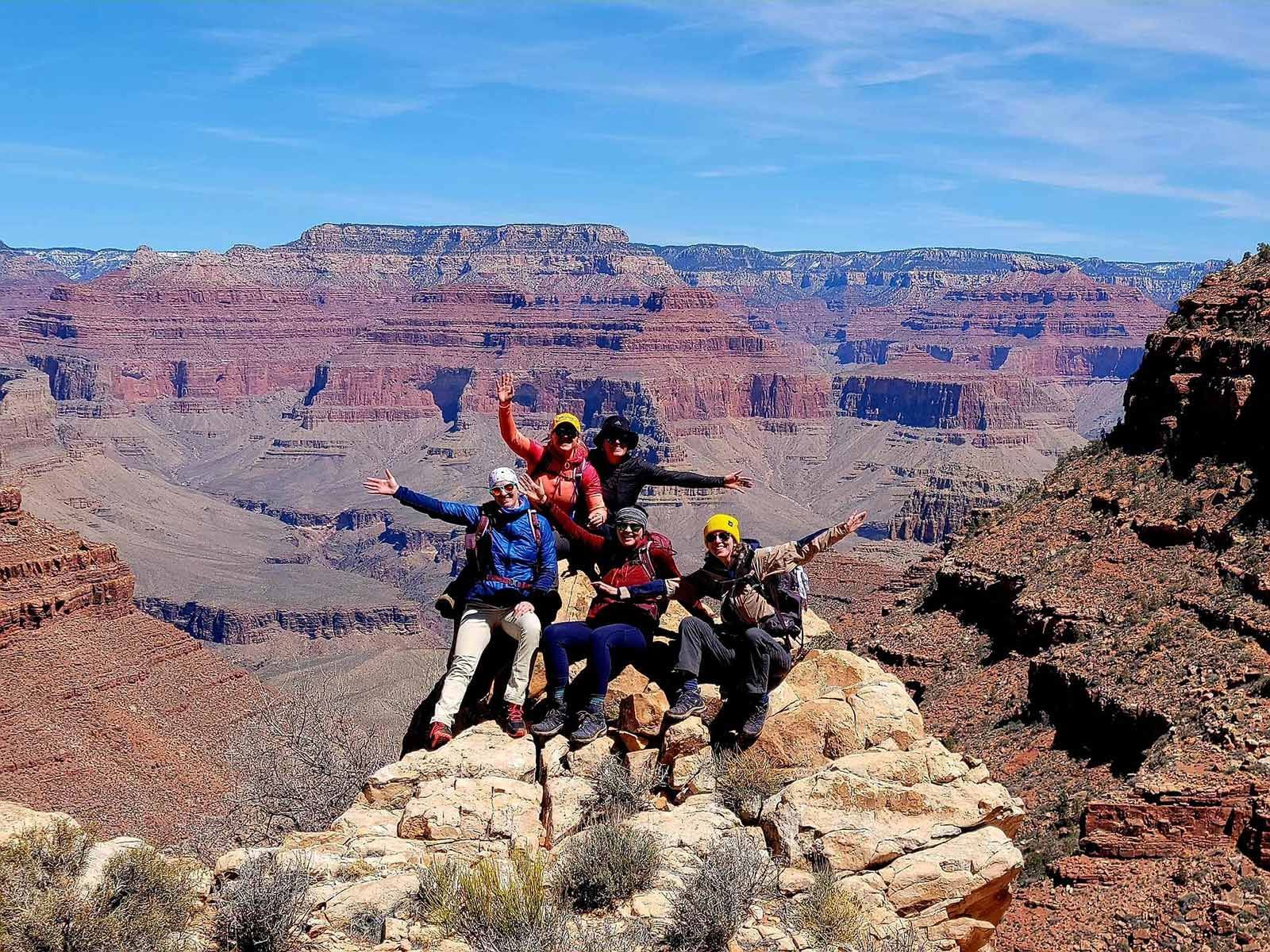
Best Grand Canyon Hikes in Winter:
Let’s begin with the least visited time of year, winter, when temperatures on the high elevation rims are experiencing true winter conditions, but the interior of the canyon is often perfectly beautiful. The average daytime high temperatures at Phantom Ranch, at the canyon floor, range from the mid-50’s Fahrenheit (12-14C) to mid-60’s (16-19C) during the heart of winter (December-February). For someone intent on exploring the splendor of the inner canyon, the winter months can be the ideal time for escaping to the bottom. However, it’s important to understand that winter hiking in Grand Canyon can bring highly variable conditions and it’s critical that backcountry visitors are prepared with clothing and equipment that will keep you safe and warm.
The other benefit to winter hiking in Grand Canyon is the lack of other visitors. Grand Canyon National Park averages over 6 million visitors throughout the year but very few of them visit during those winter months. If you would like to experience the park without the crowds, then this is your season. For the local population (and the guides), this is the secret season when we tend to head out for our personal backpacking trips. Even for those not looking to hike into the canyon, the winter is still a beautiful season to experience the contrast between snowfall on the rims against the range of colors descending to the bottom. It’s truly stunning and provides outstanding opportunities for photographers looking to capture this unique landscape.
Suggested Hikes: Bright Angel Loop,
Winter Rim to Rim,
Canyon Classic,
Phantom Ranch
Best Grand Canyon Hikes in Spring:
Springtime in the park is that magical season when the desert awakens from its winter slumber and comes alive with wildflowers and cactus blooms. Average temperatures in March and April range from highs in the 60s and 70s (16-24C) at the bottom of the canyon and mid 50s (13C) to low 70s (22C) on the South Rim. This is one of the best times of the year for heading into the canyon for a backpacking trip. Even if the rims are still a little chilly, the inner canyon is mild and gorgeous. Spring Break in Grand Canyon is when tourism starts to pick up and you will see increased crowds. The North Rim remains inaccessible until mid-May but upon opening, the popular Rim to Rim hiking season begins. May is also when the inner canyon starts to heat up, bringing high temperatures into the 90s (32C).
Suggested Hikes: Hermit Loop,
Grandview Loop,
Deer Creek/Thunder River Loop,
Rim to Rim (starting May 15th)
Best Grand Canyon Hikes in Summer:
Best Grand Canyon Hikes in Fall:
Fall is the season that offers perhaps the most favorable weather for every part of Grand Canyon. For those who prefer comfort without sacrificing adventure, our Grand Canyon Complete lodge-based tour offers a perfect fall itinerary. It’s certainly the ideal time for backcountry exploration.
High temperatures on the rims range from the 60s to 70s (16-24C) while the bottom of the canyon is still warm, still reaching the 90s (33-35C) in early to mid-September, but progressively dropping throughout the fall season. By November, the inner canyon sees highs dropping to the 60s (16-21C) and lows in the mid to upper 40s (8-10C).
September, October, and November are all wonderful times to plan overnight backcountry camping trips. The most popular month of the year is October, and the park’s backcountry office receives literally thousands of permit requests. You’ll see far less demand for November, when the inner canyon is still beautiful, with generally mild temperatures and dwindling crowds.
The fall is stunning on the North Rim as well, as the fall colors splash the Kaibab Plateau landscape with crimson and gold. The extensive groves of Aspen trees come alive and are a highlight for photography buffs. Some of the most magnificent photos of the Grand Canyon are in late September as the leaves change. But you need to time it just right, as the peak fall foliage can come and go within a matter of a week.
Suggested Hikes: Kanab Creek Adventure,
Hermit Loop,
Grand Canyon Complete,
Deer Creek/Thunder River,
Rim to Rim (through October)
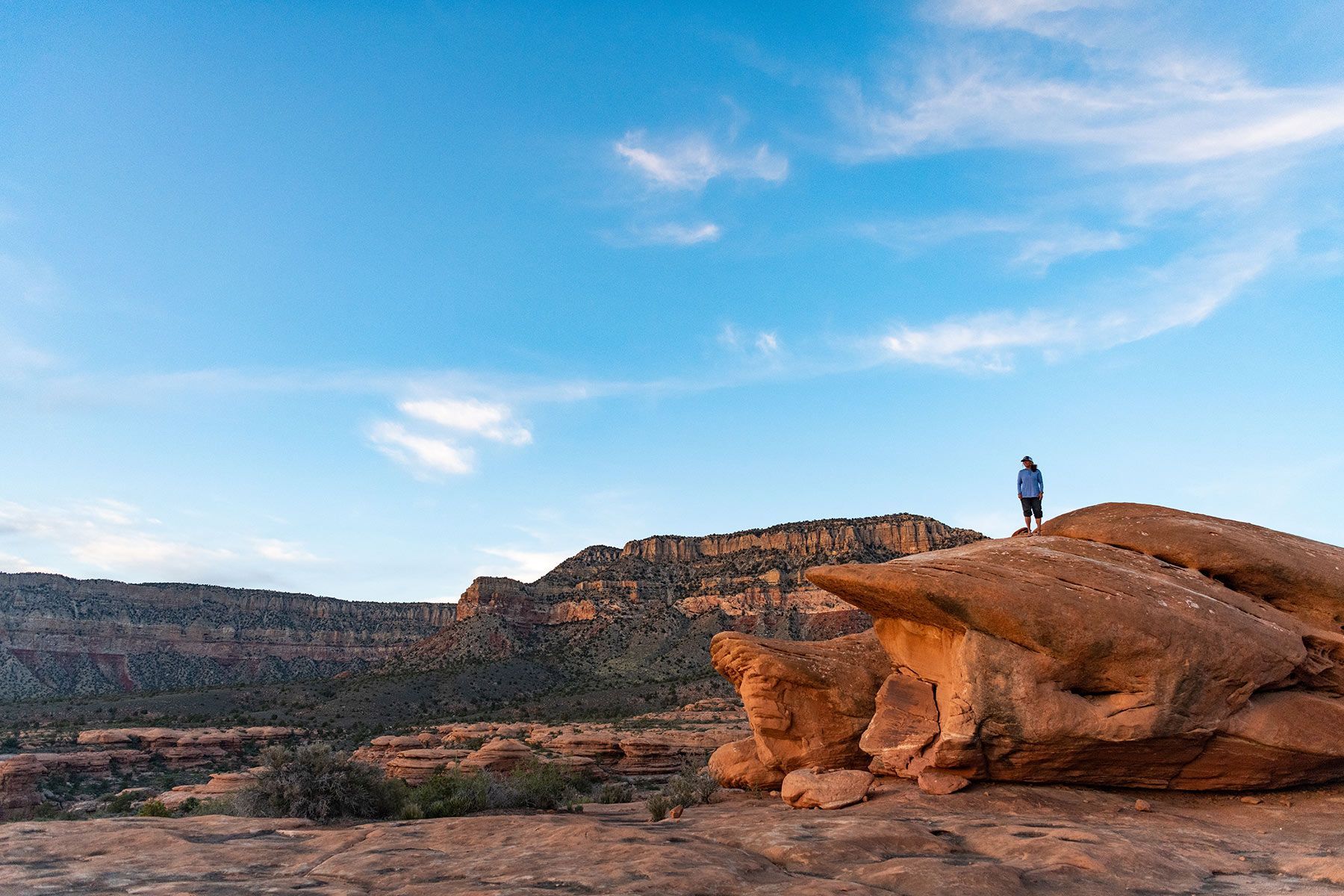
In short, when determining when is the best time of year to visit Grand Canyon, there really isn’t a wrong season to visit this Natural Wonder of the World. With proper planning, Grand Canyon provides year-round opportunities to visit and explore its majestic landscape.
Check out our Grand Canyon Destination Guide for more travel tips and seasonal highlights For more information on planning or booking a Grand Canyon tour at any time of year, visit www.fourseasonguides.com.
Frequently Asked Questions
Explore when and how to experience the Grand Canyon at its best, with insights on each season’s weather, hiking conditions, and unique beauty.
When is the best time of year to visit the Grand Canyon?
There’s truly no bad time to visit the Grand Canyon — each season offers its own charm. Spring and fall provide ideal temperatures for hiking, while summer is perfect for exploring the cooler North Rim. Winter offers solitude and stunning snow-capped views for those prepared for chilly conditions.
What is the weather like at the Grand Canyon in winter?
Winter brings cold conditions on the rims, but the inner canyon remains mild, with highs in the 50s–60s°F (12–19°C). Crowds are minimal, creating a peaceful experience. Visitors should pack warm layers and be ready for icy trails on the rim, but expect comfortable hiking at lower elevations.
Is it safe to hike in the Grand Canyon during summer?
Yes, but hikers must take precautions. Inner canyon temperatures can exceed 100°F (38°C), so plan to hike early morning or late evening, rest in shade midday, and stay hydrated. The North Rim offers cooler weather, while monsoon storms in July and August require awareness of flash flood risks.
When does the North Rim of the Grand Canyon open?
The North Rim typically opens in mid-May and remains accessible through mid-October. During these months, the weather is pleasantly cool, averaging highs in the 70s°F (21–25°C). It’s the best spot for summer visitors looking to avoid the heat of the lower canyon.
What is spring like at the Grand Canyon?
Spring brings blooming wildflowers, mild temperatures, and great conditions for backpacking. The South Rim warms to the 60s–70s°F (16–24°C), and the inner canyon stays comfortable. Crowds begin to increase around Spring Break, but it’s still one of the most pleasant times to hike and explore.
What should I expect in the Grand Canyon during fall?
Fall is considered the most balanced season — comfortable temperatures on both the rims and canyon floor, fewer crowds, and vivid autumn colors, especially on the North Rim’s aspen trees. September through November offers great hiking conditions, with October being the most popular month for backpacking.
Can you visit the Grand Canyon in winter?
Absolutely. Winter is a peaceful time with fewer tourists and incredible snowy contrasts along the rim. While the North Rim closes, the South Rim remains open year-round. Trails into the canyon are quieter, and lower elevations offer pleasant weather, making it ideal for solitude and photography.
What are the best hikes for each season?
Winter: Bright Angel Loop, Winter Rim to Rim, Phantom Ranch.
Spring: Hermit Loop, Grandview Loop, Deer Creek/Thunder River.
Summer: Grand Canyon Explorer, North Rim Basecamp, Rim to Rim.
Fall: Kanab Creek Adventure, Hermit Loop, Grand Canyon Complete. Each offers unique scenery and seasonal advantages.
When is monsoon season at the Grand Canyon?
Monsoon season typically runs from July through August. Expect brief afternoon thunderstorms, dramatic skies, and cooler evenings. While the storms bring incredible sunsets and rainbows, hikers should avoid narrow canyons due to flash flood risks and plan hikes around early mornings.
How crowded is the Grand Canyon throughout the year?
Crowds peak in summer, especially along the South Rim. Spring and fall see moderate visitation, ideal for those who prefer balance between good weather and manageable crowds. Winter has the fewest visitors, offering peace and solitude for those who don’t mind colder temperatures.
Four Season Guides, 506 N Grant St suite o, Flagstaff, AZ 86004, United States
+19285251552
35.19653980, -111.62000560

